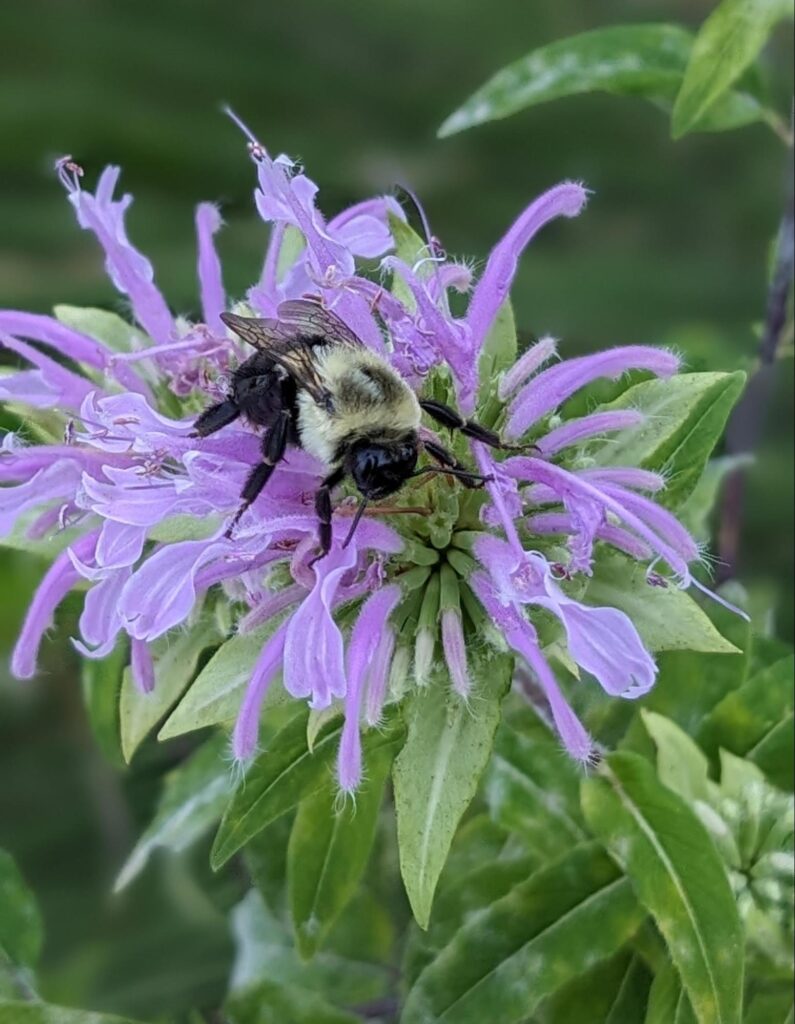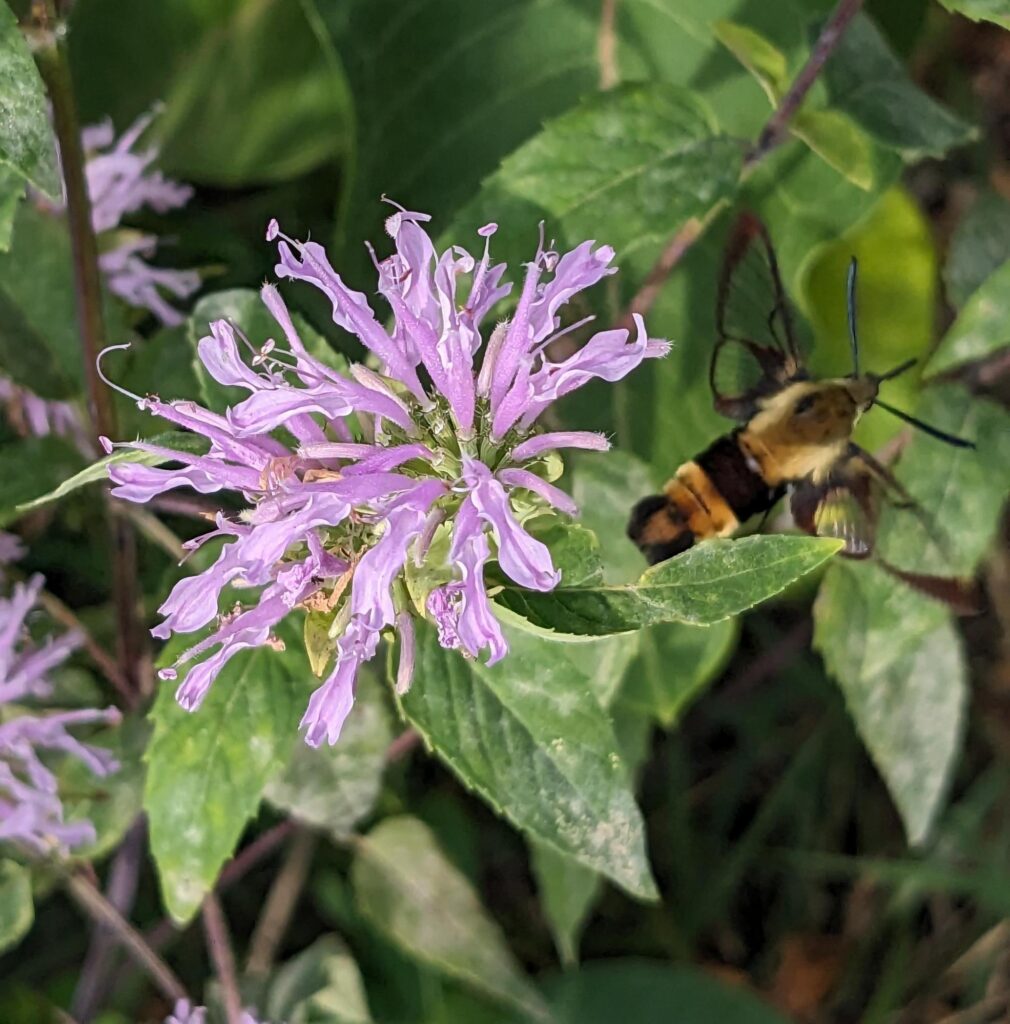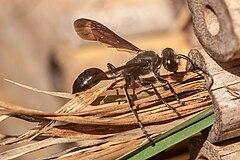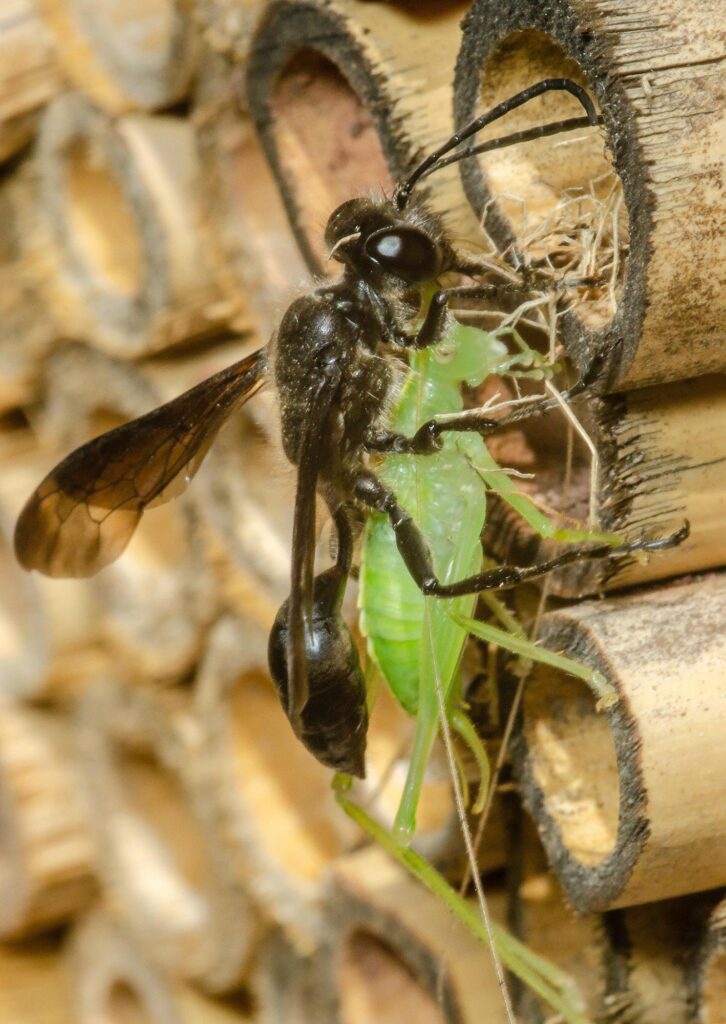by Ilse Gebhard, KAWO member
At our former home the tops of the screens of the screened-in porch are held in place from the outside by 2 x 4 studs. For years I noticed wasps were boring holes in the underside of these 2 x 4s. Having heard of wood-boring wasps, I never gave it another thought.
One mid-July afternoon, while still living there, I lay back in my lawn chair to watch the hummingbirds come to the feeder just outside the porch. Between bouts of activity at the feeder, I used the binoculars to see what insects might be visiting the Wild Bergamot (Monarda fistulosa) in bloom next to the porch. There were several bumblebees, an unidentified skipper, two snowberry clearwing moths, a monarch, and lots of other small flying or crawling pollinators.


The break in hummer activity also gave me a chance to look at the wasps using the holes in the 2 x 4s. They seemed to have long “ovipositors,” which in certain insects is an organ at the end of the female’s abdomen by which she deposits eggs. It made sense that females would be using the holes for nesting sites. It was only when a wasp arrived carrying a dead blade of grass about 3-4 inches long that I started to wonder about those long ovipositors.

A quick trip inside to the computer searching for “wasps, nest, grass lining” gave me the answer – a grass-carrying wasp, Isodontia mexicana, most likely. iNaturalist shows four species of grass-carrying wasps in Michigan with I. mexicana the most abundant and with four sightings in Kalamazoo County.
Native to North America, the adult is about ¾ inch long, has a thread-waisted black body and visits flowers for nectar –a pollinator! These non-aggressive, solitary wasps build their nests in hollowed branches or other natural cavities, often reusing the nests of other species. They line the inside with grass or other plant fibers.

I. mexicana mainly preys on tree crickets, carrying them to her nest where she then lays one or more eggs. When the eggs hatch, the emerging larvae will feed on the living, but paralyzed, prey. The wasp larvae spin cocoons and the late summer generation overwinters at the pupal stage, to emerge as adults in spring.
For information on providing nest sites for many of our native bees and wasps see this fact sheet from the Xerces Society.
